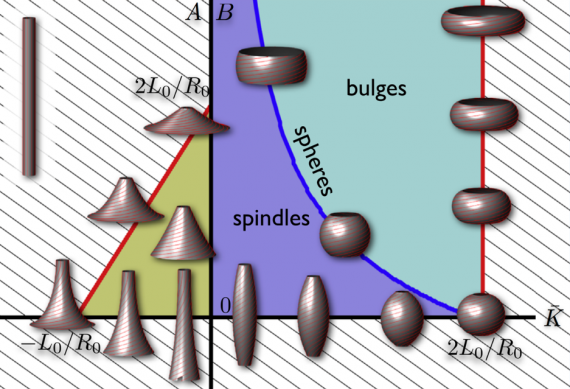Section:
KEYWORDS
deployable structures
flexible material
haptics
relative sliding
shape-adaptable surfaces
soft robotics
stents
A morphable sheet structure which can be flexed, bended and twisted, whose shape can be modified, providing a sheet structure with adaptable or programmable shape. This sheet structure can be used for many applications, for example implantable stents, deployable constructions such as antennas, solar panels or sails, adaptive skins for organic architecture, soft robots or haptics.
TECHNICAL FEATURES
Many technologies, established or emerging, rely on soft and highly deformable structures, more particularly thin sheets, barriers or interfaces, with adaptable and programmable shape. These include deployable structures used in medicine (stents) or space (antennas, solar arrays or sails, etc), which possess ultra-low weight, compact stowage, and which can be remotely assembled into a precise shape. As a matter of fact, the design of devices and structures with adaptable shape is greatly simplified if the shape-morphing principle is embodied in the material that defines the thin sheet. By drawing inspiration from the micro-architecture of the euglenoid pellicle, we propose a new principle to achieve shape-adaptable and programmable thin shells. Specifically, the material architecture we propose consists of a plurality of flexible rod elements closely arranged parallel to each other and free of undergoing relative sliding at their junctions.
TRL Level: 4 (Technology Validated in Lab)
POSSIBLE APPLICATIONS
- Deployable structures used in medicine (stents);
- Soft robotics;
- Space (antennas, solar arrays or sails, etc), which possess ultra-low weight, compact stowage;
- adaptive skins for organic architecture and design;
ADVANTAGES
- Continuous and unlimited actuation by relative sliding of adjacent rod elements;
- No tight limits on the magnitude of shape changes or on the achievable shapes;
- Simple design compatible with common additive manufacturing (3D printing);
- Possibility of using rod elements with variable degree of porosity
INVENTORS: Antonio De Simone, Giovanni Noselli, Marino Arroyo
PATENT STATUS: Pending
PRIORITY NUMBER: EP18382845
PRIORITY DATE: 23/11/2018
LICENSE: Italy
-------



